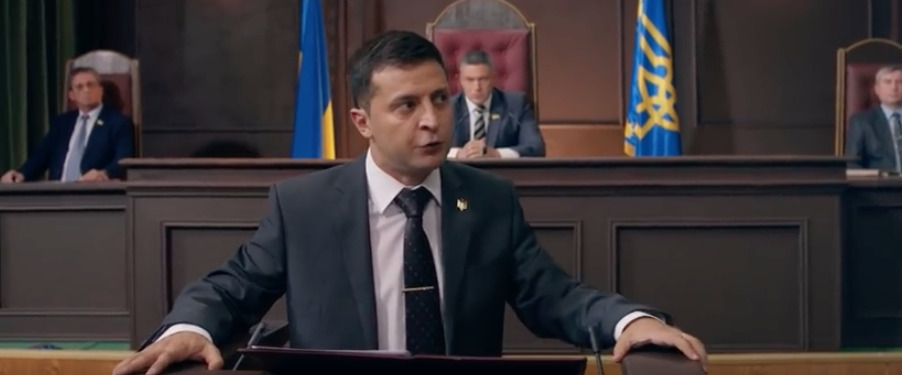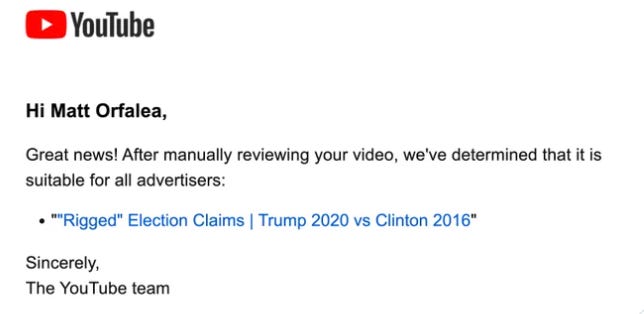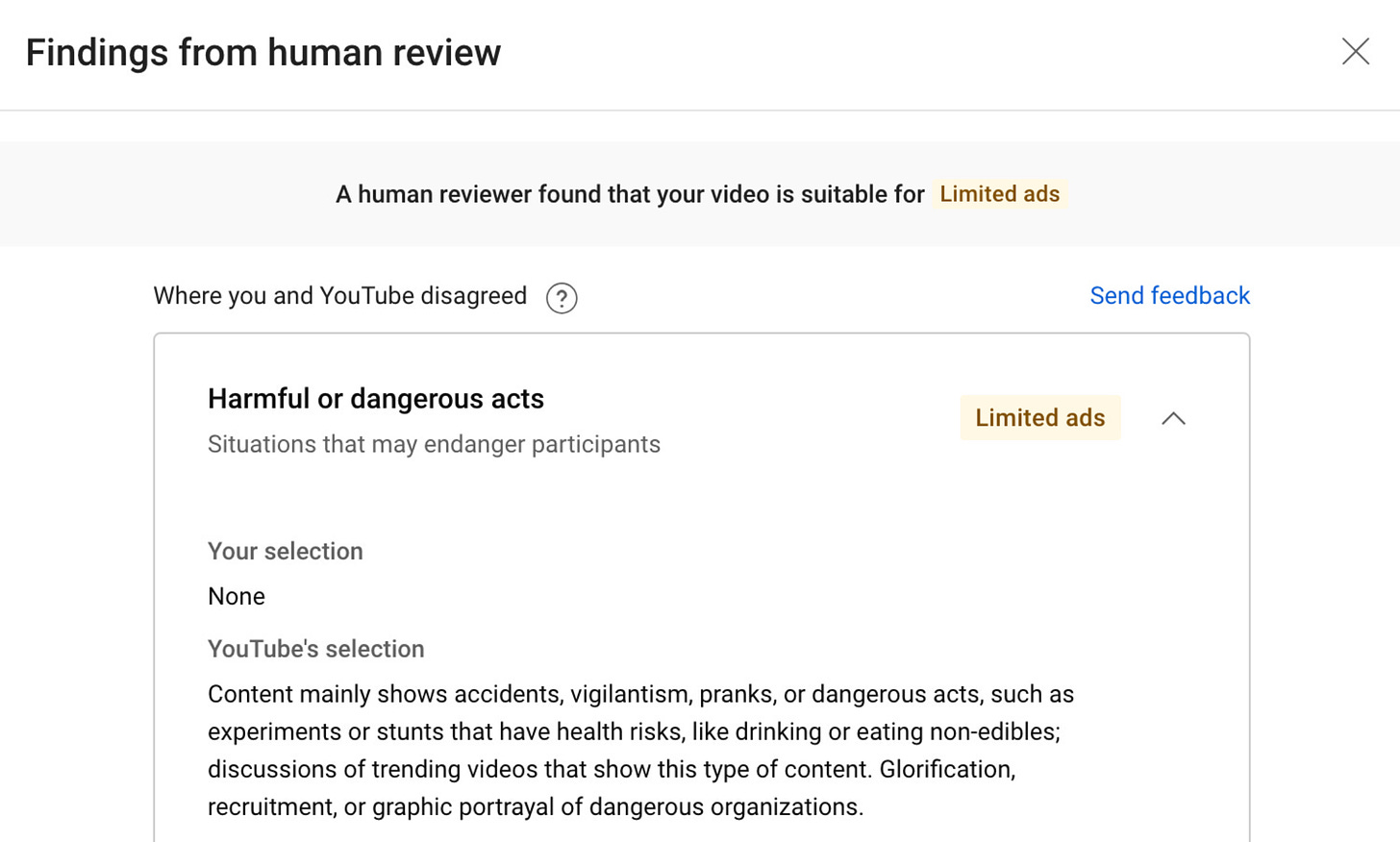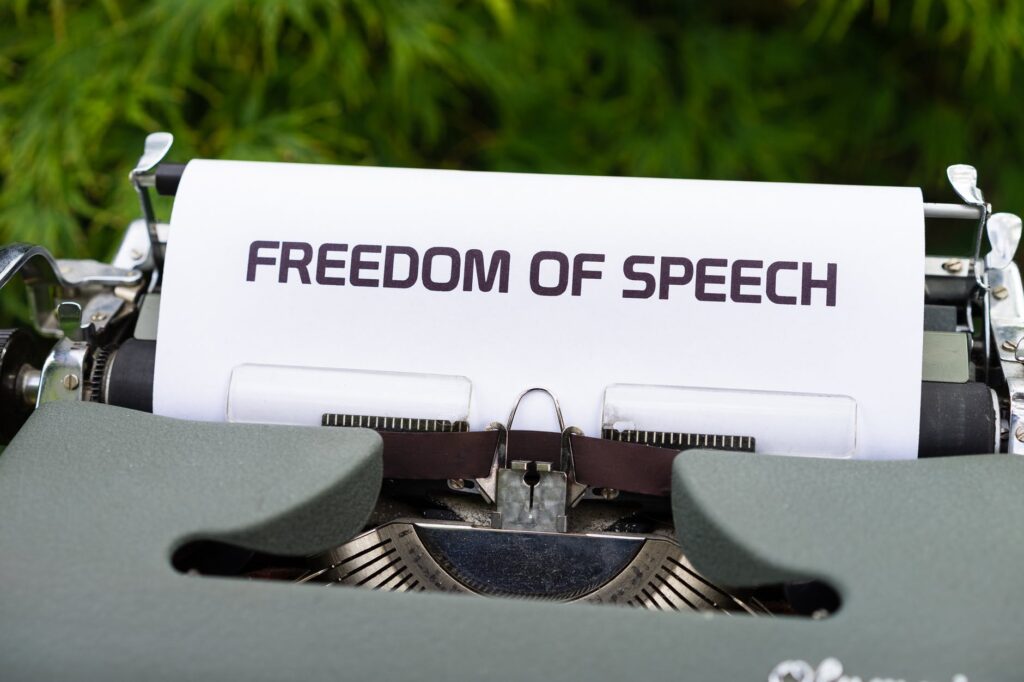Link here.
Here is Tucker Carlson’s complete interview with Hungarian PM Viktor Orban referenced in the above video:
Link here.

By Andrew Korybko, Substack, 9/3/23
In an ironic twist of fate, this oligarch went from pulling the Ukrainian leader’s strings to having his life ruined by the same man who he thought was his puppet.
Many observers were shocked when the SBU arrested Zelensky’s former patron, oligarch Igor Kolomoysky, on charges of fraud, corruption, and money laundering over the weekend. The Ukrainian leader then thanked the security services in his evening address “for their determination to bring every case stalled for decades to a just conclusion.” This development comes two and a half years after the US sanctioned Kolomoysky on related pretexts, thus suggesting that the latest move was endorsed by them.
His arrest is due to several converging factors that also explain why it happened at this particular time. First, the vicious blame game that broke out between the US and Ukraine last month over the failed counteroffensive threatens to derail their relations if it isn’t soon resolved. At the core of this dispute are US accusations that Ukraine is arrogantly ignoring the military-strategic advice that it’s been given. Accordingly, the US has an interest in removing those who it suspects of negatively influencing Zelensky.
It’s unclear exactly what sway Kolomoysky might have still exerted over Zelensky after the latter fell largely under US influence since the start of Russia’s special operation a year and a half ago, but it makes sense why Washington wouldn’t want to risk the chance that he could play a role in their escalating spat. This observation doesn’t explain why he was arrested only just now, however, thus leading to the second relevant factor regarding the urgent need to manage Ukrainian and US public opinion.
People in both countries are growing fatigued and frustrated with this conflict. The challenge this poses for Ukraine is that it reduces support for prolonging the proxy war, plus folks are now starting to remember some of his other unfulfilled promises like fighting corruption. As for the US, a lot of Americans no longer want to fund Ukraine, or they at least want accountability for how their money is being spent after fearing that figures in this infamously corrupt country are stealing their tax dollars.
It therefore made sense for Zelensky to finally stage a public spectacle by allowing the arrest of his corrupt patron. He killed two birds with one stone by satiating both publics at no cost to himself. In fact, the latest phase of his anti-corruption campaign actually works in his political interests, thereby segueing into the third factor pertaining to the newfound US pressure on him to hold presidential elections next spring as planned.
Zelensky will almost certainly run for re-election even though he hasn’t yet officially announced his candidacy. He’s still somewhat popular with his people, as are most leaders whenever there’s a conflict being fought on their territory (or the territory that they claim as their own in this case), but his failure to effectively fight corruption despite prior promises disappointed many. By letting the SBU arrest his former patron Kolomoysky, however, Zelensky hopes to regain some of his base’s lost trust.
These three factors – the US wanting to consolidate its influence over Zelensky as bilateral ties become more complicated; the need to satiate the Ukrainian and US publics’ anti-corruption demands; and the incumbent’s undeclared re-election campaign – account for Kolomoysky’s arrest at this particular time. Simply put, it serves both states’ interests. In an ironic twist of fate, this oligarch went from pulling the Ukrainian leader’s strings to having his life ruined by the same man who he thought was his puppet.
By Matt Taibbi, Racket News, 8/29/23
When you know you’re being censored, you can protest. But what to do about silent editorial punishment, dished without announcement, by tech platforms that appear to be learning fast how to avoid public outcry?
A year ago, this site had to throw a public fit to resolve a preposterous controversy involving videographer Matt Orfalea and YouTube. The issue centered around the above video, “‘Rigged’ Election Claims, Trump 2020 vs. Clinton 2016,” which despite total factual accuracy was cited under its “Elections Misinformation” policy. YouTube in July of last year demonetized Orf’s entire channel over his content, saying “we think it violates our violent criminal organizations policy.”
As you will see if you click now, the above video, as I argued to Google, could not possibly be violative of any “misinformation” guideline, as it was comprised entirely of “real, un-altered clips of public figures making public comments.” After both Orf and I tantrumed in public — there’s not much else to do in these situations — YouTube sent Matt the “Great News!” that “after manually reviewing your video, we’ve determined that it is suitable for all advertisers”:

We thought the matter was settled.
This week, Orf discovered the video had been re-classified as problematic by a new “human reviewer,” who declared it in violation for “harmful or dangerous acts” that “may endanger participants.” Potential problems, the reviewer determined, included “glorification, recruitment, or graphic portrayal of dangerous organizations,” by which I can only presume they mean former Bernie voters like Orf and myself whose political homelessness apparently constitutes a threat.

I’ve once again sent complaints up the Google/YouTube flagpole. Perhaps Racket readers are tired of digital censorship tales. If so, I understand, I do. I want to underscore that the chief reason now for sharing incidents like this is to show the rapid progression of tactics being used not just against this site, or Orf, but everyone.
In the last 6-8 months — hell, the last 2-3 months — the landscape for non-corporate media businesses has tightened dramatically. Independent media content is increasingly hard to find via platform searches, even when exact terminology, bylines, or dates are entered by users. Social media platforms that once provided effective marketing and distribution at little to no cost are now difficult to navigate even with the aid of paid boosting tools. In other words, even if your business does well enough to pay full retail rates for marketing, a widening lattice of algorithmic restriction across platforms is making distribution for non-corporate media a nightmare anyway.
It’s an unfortunate coincidence that this situation involving Orf arrives as Racket is preparing a story about new techniques being deployed in recent months to reclassify even non-violative true content as misinformation. Like this affair, that coming story touches on a phenomenon we saw repeatedly in the Twitter Files, but didn’t delve into in detail then: the use of deamplification and “visibility filtering” as PR-friendly alternatives to outright bans.
This episode with Orf represents a crack in the system, where the user isn’t formally notified of a demonetization or deamplification decision, but somehow learns of it anyway. How often is it happening when users don’t find out? Also, are these tools being used pre-emptively, for certain topics? There are so many things we need to learn still, about how access to information is being controlled.
Until then, will YouTube do the right thing and fix this particular idiocy? Even for your company, this shouldn’t be a hard call.
If the video above somehow meets your definition of “harmful or dangerous acts,” you’ve gone crazy, in addition to rendering both of those terms totally meaningless. If you believe otherwise, could you at least explain your thinking, so the public can evaluate it?
Sincerely, the editor, etc.

By Stephen Bryen, Substack, 9/2/23
Tass, the Russian State news service, says that an attempt by Ukraine to blow up the Kerch Strait bridge to Crimea was prevented when the Russians blew up a Ukrainian sea drone.
According to news reports, the Ukrainians tried three times to hit the famous bridge on September 1st.
Thanks for reading Weapons and Strategy! Subscribe for free to receive new posts and support my work.
The Russians have created a sea barrier of sunken ships to protect the bridge from sea attacks. These obstacles channel any attacking vessel and give the Russian an opportunity to interdict them and destroy them.
But there is more to the story than what is in Tass.
According to a report on the Military Channel, the Ukrainian attempt to destroy the bridge was aided and abetted by US overhead assets coordinating the Ukrainian operation.
The US fielded a Global Hawk Forte II (RQ-48) which is equipped with sophisticated sensors; a US Navy P-8A Poseidon (to track Russian ships and submarines); an Army CL-60 Artemis (Airborne Reconnaissance and Targeting Multi-Mission Intelligence System) and a Navy EP-3E Aries II, a multi-intelligence platform based on the venerable P-3. These platforms were intended to support the Ukrainian attempt to probe vulnerabilities in Russia’s defenses adjacent to and on the bridge while also supporting the Ukrainian counter-offensive in southern Ukraine.
The Russians, at least so far, have said nothing other than they repulsed the attacks on the bridge.
The Kerch Strait bridge connects the Russian mainland to Crimea. It features a roadway and also supports the transit of freight trains. It is a vital roadway for Russian military operations in Crimea, Kherson and Zaphorize. The bridge is important enough that, after it was seriously damaged by a Ukrainian truck bomb attack, and repaired, Vladimir Putin himself drove a Mercedes car across the bridge.
Like the Nordstream pipeline, the US has made no secret of its desire to destroy the bridge. Whether the bridge can survive is anyone’s guess. especially when the US is pouring significant efforts into its destruction.
The overall situation in the Kherson and Zaphorize regions, the focus of the main thrust of Ukraine’s counter offensive, appears to show that Ukraine will not succeed in its declared objectives to breach Russia’s defenses and re-take Melitopol. Meanwhile the Ukrainians have lost significant amounts of armor and incurred heavy casualties. Not only have these losses taken a toll, but many of Ukraine’s best units have been chewed up.
Washington’s best hope is to try and stabilize the front and bring the intense fighting to a halt, buying time for Ukraine to mobilize new forces, train them, and reequip their troops. That enterprise would take six months to a year if it happens. The plan, if it can be called that, is so far based on Russian reluctance to commit the bulk of its forces into an offensive to break the Ukrainian army. While there has been talk about Russia launching a big operation in the Kupyansk area, it has so far not materialized. Some suggest that Russia is waiting for Ukrainian forces to be reduced even further than they are already, before Russia’s generals are willing to risk a true offensive.
The problem for the Russian side is that if they wait too long they will have to repeat everything again and take losses that the Russian public might not be willing to accept. There is a lot of talk in Moscow and on social media, some by serious politicians, that Russia should nuke Ukraine and go home. Others say that Russia should attack the supply depots in Germany and Poland and elsewhere, to in effect strangle the Ukrainian army. None of these proposals have gained much traction, but that could change if the war is drawn out. Oddly, Ukrainian attacks using drones and sabotage of installations on Russian territory may backfire on Ukraine by creating significant public anger in Russia that will require strong action by the government.
The potential for new troubles has been aided and abetted by an interview with Ukraine’s chief of military intelligence Kyrylo Budanov who says that Ukraine should take the war to Russian territory. This would mean using its main army forces to attack across Russia’s border (not just fire artillery shells, send in swat teams, or carry out arson, drone attacks and assassinations). His interview, if it is taken seriously, could have unintended consequences for Ukraine by stepping up the overall Russian response beyond the alleged limits of the Special Military Operation. For example, that could mean massive attacks on Kiev, or Odessa, or other actions designed to cripple Ukraine and its government.
Budanov makes many claims and a good many of them have to be taken with a grain of salt. However, we don’t know which ones the Russians will take seriously.
Meanwhile, Washington continues to take big risks, starting with the supply of cluster munitions and, now, depleted uranium anti-tank shells. The use of US intelligence assets to target Russia is also a risk that could lead to a bigger conflict in Europe. If the Washington escalation continues it is hard to predict what will happen in the weeks ahead.

By Kevin Gosztola, The Dissenter, 8/29/23
The crowdfunding platform GoFundMe halted a fundraiser for the news website the Grayzone and refused to transfer over $90,000 raised to the organization.
When Grayzone editor-in-chief Max Blumenthal requested an explanation on August 19, a representative with GoFundMe’s Trust and Safety Team claimed, “Due to some external concerns, we need to review your fundraiser to make sure it complies with our Terms of Service.”
Eight days later, GoFundMe had provided no additional information on their “review.”
GoFundMe’s censorship is the latest in a series of actions by platforms against news websites that are known for opposing United States foreign policy doctrine.
MintPress News had their fundraiser taken down by GoFundMe in March 2022. The following month PayPal banned the organization and MintPress News editor-in-chief Mnar Adley from using the payment processor. Adley was given no explanation for the decision.
In May 2022, Consortium News was similarly banned from fundraising through PayPal. Consortium News editor-in-chief Joe Lauria spoke with an agent in PayPal’s “escalation department.” But again PayPal refused to share details related to the decision to prohibit Consortium News from using the corporation’s services.
These news sites are well-known for scrutinizing U.S. military branches and security agencies and the patchwork of relationships that current and former officials have formed with media organizations, think tanks, and public relations firms.
According to Blumenthal, GoFundMe has agreed to return the funds to donors. The Grayzone has directed donors to give through a new fundraiser posted to Spotfund.
That strongly suggests that stopping donations was never about enforcing GoFundMe’s terms of service. The platform’s goal was to coerce the organization to go somewhere else to fundraise so GoFundMe did not have to deal with pressure from the Grayzone’s vocal detractors in and outside of government.
One of the journalists the Grayzone fundraiser was intended to support is Kit Klarenberg, who British counter-terrorism police detained and interrogated at the London Luton Airport on May 19.
British police questioned Klarenberg about his journalism for the Grayzone and seized his electronic devices. He was asked about his views on the war in Ukraine. While he has not been charged with a crime, an investigation against Klarenberg is still pending.
The fundraiser was also supposed to help pay journalist Wyatt Reed, who was banned from PayPal in June 2022 and then Venmo in November that same year.
In October 2022, Reed traveled to the Donbas to report on the other side of the war in Ukraine—what the war looked like for people living in the Donetsk and Luhansk regions aligned with Russia. While Reed was in his hotel, it was shelled.
PayPal, Venmo, GoFundMe, and other crowdfunding or payment processing platforms face no requirement to be transparent with their users. They can arbitrarily revoke access to their services and follow a blueprint that was largely established in response to WikiLeaks.
As I recounted in my book, Guilty of Journalism: The Political Case Against Julian Assange, on December 3, 2010, PayPal blocked WikiLeaks. The corporation initially maintained that they had done so because the U.S. State Department had concluded that WikiLeaks’ “activities were illegal in the U.S.” (The State Department denied pressuring PayPal.)
The censorship by PayPal convinced Visa and MasterCard to also block donations to WikiLeaks. PostFinance, the financial arm of the Swiss post office, also followed suit and froze the accounts of WikiLeaks editor-in-chief Julian Assange.
Bank of America banned donations to WikiLeaks on December 18. Later, it was learned that the multinational investment bank had plotted with Palantir, Berico Technologies, and HBGary Federal to disrupt WikiLeaks because Bank Of America was afraid of becoming a WikiLeaks target.
Assange has been detained at the Belmarsh high-security prison in London, awaiting possible extradition from the United Kingdom to the U.S. He faces 17 unprecedented Espionage Act charges that were brought by the U.S. Justice Department.
The journalism that ultimately spurred PayPal to block WikiLeaks is the same journalism that U.S. prosecutors have criminalized in their political case against Assange.
When faced with the financial blockade (that ended a few years later), Assange said, “What we are seeing here are dangerous moves towards a digital McCarthyism. These actions, and the others like it, are not the result of a legal process, but rather are a result of fear of falling out of favor with Washington.”
Little has changed. PayPal, Venmo, GoFundMe, etc, are all afraid of regulation or greater interference by the government. The companies preemptively ban journalists or media organizations, which are considered to be disloyal and repugnant, especially as they challenge the agenda of the U.S. and North American Treaty Organization (NATO) during wartime.
At the height of the censorship against WikiLeaks, the Freedom of the Press Foundation (FPF) “accepted donations on behalf of WikiLeaks readers.” They did so because WikiLeaks publications were “clearly protected speech” and “no court ever ruled WikiLeaks had broken any laws.” FPF recognized companies were circumventing the First Amendment.
In 2017, FPF announced that the blockade had been over for some time. “We consider the end of the unjust financial blockade an important victory for free expression. We are proud to have been an avenue for WikiLeaks readers to express themselves for the past several years. And if a press organization faces such a blockade again, we plan on being there to fight it.”
Consortium News, MintPress News, and The Grayzone have never been notified that they were suspected of violating any U.S. law or regulation. Instead, companies opaquely deny them access to their services seemingly because they oppose U.S. imperialism and happen to enjoy a wide enough readership to make an impact through their reporting and commentary.
While suppressing such news sites, they infringe upon the freedom of readers to express themselves through their donations.